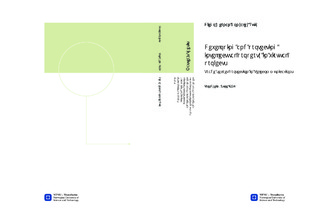| dc.description.abstract | This thesis is intended to develop a comprehensive understanding of how trade secrets can be used as a means to protect knowledge developed through projects conducted in the telecommunications sector. At the same time, the study explores which mechanisms should be employed to regulate access and utilization of trade secrets when their disclosure is inevitable to accomplish project requirements. Telecommunication firms are large and globally distributed organizations whose business operations rely upon interoperability and close collaboration with different parties. This suggests that conducting virtual projects crossing national and cultural boundaries, and sharing information for future survival and development, are common practices within this industry. Research around intellectual property issues in the area of project management in general has been poorly developed. At the same time, studies have been conducted towards patenting as a means to protect technological knowledge in telecommunications whilst trade secrets have not been contemplated by the academia. The purpose of the investigation is to contribute to a certain degree with new knowledge as a basis for future studies in the field. In order to achieve this, an extensive literature review of the three relevant theories to the study is carried out: trade secret protection, virtual project literature and intellectual property rights in telecommunications. The empirical data collected through interviews and document analysis serve as a basis for assessing the results of the literature study. This thesis is mainly divided into 4 sections. In the first section, the methodology of the study is widely described, which follows a qualitative approach. The research design is explicated including a brief discussion of how the research questions were defined. The data collection process is also presented along with the interview guide model, the narratives from the interviews conducted and the document analysis as a supplementary method. Reliability and validity issues of the study are described in the last part of this section. The second section illustrates the literature study of this thesis. The theoretical framework is built upon three different approaches associated with the previously mentioned theories. Literature review on the topic of trade secrets as a means to protect intellectual property is presented, comprising the role of trade secrets in virtual projects and common protection mechanisms. Factors affecting trade secret protection when working along with collaborative partners in a virtual project setting are outlined. Theory that discusses the core issues of intellectual property rights in telecommunications is also presented. Finally, the main findings from the literature are summarized in a proposed theoretical model which revolves around the life cycle of the project. A distinction between shared and created information that is or might be catalogued as a trade secret is described in the model. The third section introduces the data analysis of the investigation. It is based on literature findings and the empirical part encompassing 3 interviews and document analysis. Experiences from practitioners and important issues found in the document analysis are presented in order to elaborate an empirical basis for the discussion. Furthermore, implications encountered between theory and practice are exposed discussing differences, similarities and new contributions. The fourth and last section of this thesis includes the discussion chapter and the concluding remarks. The information presented in the discussion is based on the empirical and theoretical findings, and is classified in two parts. Factors regulating trade secret disclosure before, during and after project execution constitute the first part of the discussion. Trade secret as an instrument to secure future innovations in telecommunications represents the second part of the discussion. An enhanced model is illustrated covering the results from this chapter. This model comprises factors influencing the protection of confidential information considered as trade secret across the life cycle of the project, and evaluates the extent to which trade secrets can be used to secure future innovations developed along with collaborative partners within a virtual project setting. Limitations of the study and suggestions for further research are also addressed. This section ends with the conclusions of the study, where the problem statement is revisited in order to examine to what extent the research questions have been answered throughout the course of this thesis. | nb_NO |

